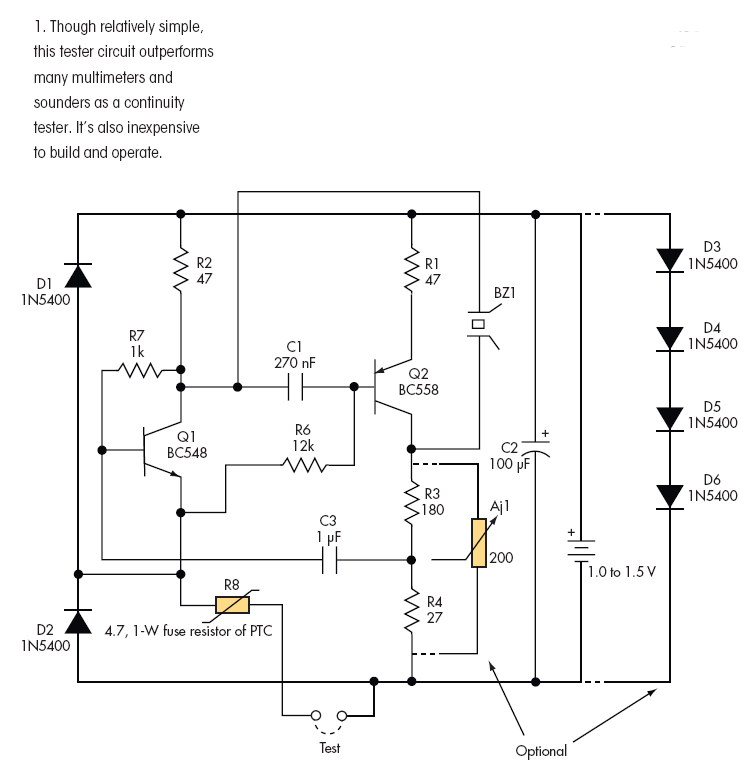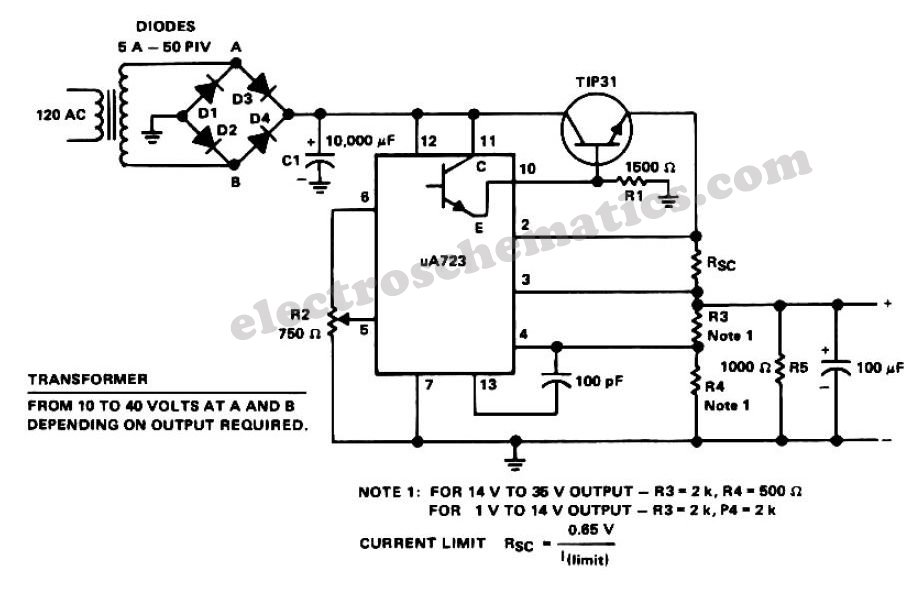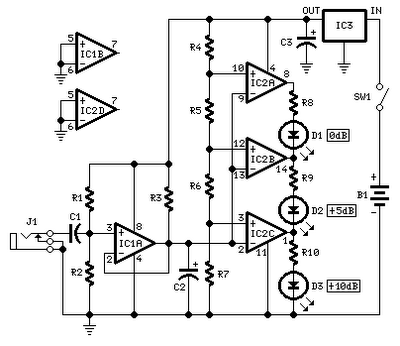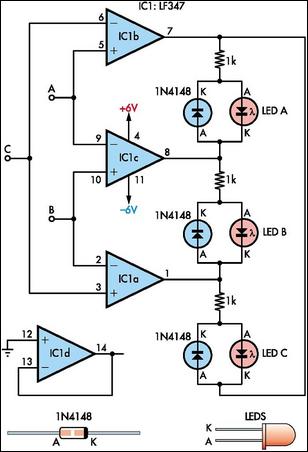
Balance Indicator for Symmetric Power Supply
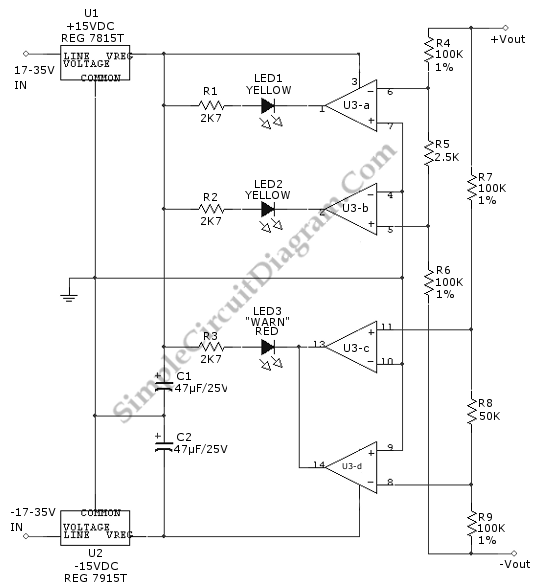
A balance indicator for a power supply that shows whether a symmetric power supply is truly symmetric. It utilizes two pairs of comparators from an LM339N quad comparator.
The balance indicator circuit employs the LM339N quad comparator to assess the symmetry of a dual power supply. This device contains four independent comparators, enabling the design of two pairs that can be used to compare the voltage levels of the positive and negative rails of the power supply.
The circuit is configured such that each comparator in the pair receives input from one of the power supply rails. The reference voltage for comparison can be set to ground or a predefined voltage level, depending on the desired sensitivity of the indicator. When the voltages on the two rails are equal, the outputs of the comparators will reflect this balance, providing a clear indication of symmetry.
The outputs from the comparators can be connected to LED indicators or a display module to visually represent the symmetry status. If the voltage levels deviate, the corresponding LED will illuminate, signaling an imbalance in the power supply. This visual feedback allows for quick diagnostics and ensures that the power supply operates within the required specifications for balanced performance.
In practical applications, this balance indicator can be integrated into power supply units used in audio equipment, instrumentation, and other electronic systems where voltage symmetry is crucial for optimal operation. The simplicity and effectiveness of using LM339N comparators make this circuit an efficient solution for monitoring power supply balance.Balance indicator for power supply show if a symmetric power supply is really symmetric or not. With two comparator pairs from a LM339N quad comparator we.. 🔗 External reference
The balance indicator circuit employs the LM339N quad comparator to assess the symmetry of a dual power supply. This device contains four independent comparators, enabling the design of two pairs that can be used to compare the voltage levels of the positive and negative rails of the power supply.
The circuit is configured such that each comparator in the pair receives input from one of the power supply rails. The reference voltage for comparison can be set to ground or a predefined voltage level, depending on the desired sensitivity of the indicator. When the voltages on the two rails are equal, the outputs of the comparators will reflect this balance, providing a clear indication of symmetry.
The outputs from the comparators can be connected to LED indicators or a display module to visually represent the symmetry status. If the voltage levels deviate, the corresponding LED will illuminate, signaling an imbalance in the power supply. This visual feedback allows for quick diagnostics and ensures that the power supply operates within the required specifications for balanced performance.
In practical applications, this balance indicator can be integrated into power supply units used in audio equipment, instrumentation, and other electronic systems where voltage symmetry is crucial for optimal operation. The simplicity and effectiveness of using LM339N comparators make this circuit an efficient solution for monitoring power supply balance.Balance indicator for power supply show if a symmetric power supply is really symmetric or not. With two comparator pairs from a LM339N quad comparator we.. 🔗 External reference
